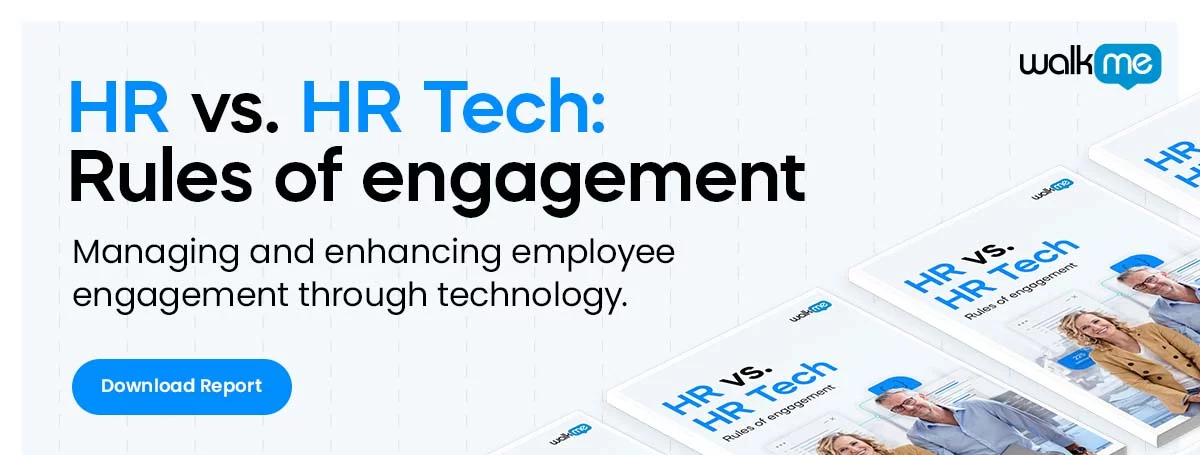
Standardizing an employee offboarding HR workflow can help you save time when an employee departs the organization.
Having an offboarding workflow is also important for ensuring that the employer:
- Understands the reasons why employees left
- Can assimilate employee feedback into existing business systems
- Provides as positive an experience as possible to departing employees
- Protects their reputation and their employer brand
In this post, we’ll learn what the employee offboarding workflow looks like and a few ways to simplify it.
The Employee Offboarding HR Workflow
Employee offboarding is the final stage of the employee life cycle, or the employee’s life cycle with their organization.
One model of this life cycle, proposed by Gallup, includes seven stages:
- Attract
- Hire
- Onboard
- Engage
- Perform
- Develop
- Depart
While many HR professionals tend to focus on the earlier stages in the cycle, such as employee training and development, it is also crucial to deliver a positive offboarding experience.
During this stage, Gallup – as well as many other HR experts and business experts – recommend creating a positive offboarding experience when employees leave the company.
As alluded to above, doing this can leave employees with a positive impression of the organization, which can improve the employer brand. Negative experiences, on the other hand, will have the opposite effect.
When constructing a workflow for the departure stage, it is recommended to focus on several key ingredients.
These include:
- Using a survey to gain insight into the employee’s reason for departure
- Completing all the required documentation, such as benefits packages and severance packages
- Delegating tasks to other staff responsible for handling certain stages in the offboarding process, such as IT and accounting team members
Each organization will naturally have its own workflow for this process, so each HR department should develop a unique workflow for their organization.
Below, we’ll cover a few ways to simplify and standardize that process.
How to Simplify and Standardize the Offboarding Workflow
Here are a few tips that can help HR personnel both save time and improve efficiency when offboarding employees.
Use a checklist
Checklists, or templates, are useful in almost any business situation.
For instance, a checklist:
- Makes it easy to standardize workflows
- Minimizes errors
- Ensures that no tasks get forgotten
- Saves time
To construct a checklist, simply write down the key steps that must be repeated in each offboarding process, then add them to whichever task management software you use most.
Also: for related checklists, be sure to check out our new employee training checklist, our employee training manual template, and our change management checklists.
Automate communications
Automation can be applied throughout the offboarding process to save time and boost efficiency.
One of the best areas to apply automation is to automate communications.
For instance, every time an employee is offboarded, HR staff must:
- Set up appointments with the employee
- Relay instructions to other personnel responsible for offboarding tasks
- Instruct the employee on any final steps they need to take
- Send an exit survey to the employee
Unified communication solutions are one example of apps that can be used during this process. These platforms can help companies streamline their internal and external communications to improve productivity.
Other apps include:
- HR platforms, which often contain self-service portals
- Digital adoption platforms (DAPs), which can streamline the entire product adoption process, including product offboarding
- Task management apps, such as Trello, which usually contain chat features, as well as to-do lists
- HCM platforms, such as Oracle Cloud
- Project management apps, which are more sophisticated versions of task management apps
For some, a human resources definition may not seem to include technology, but automation is increasingly being used in HR departments around the world. With only a small investment, HR managers can automate the most repetitive tasks in the offboarding process, saving both time and mental effort.
Document the process
Documenting a business process means writing down the most essential steps and instructions for a given procedure – in this case, employee offboarding.
When documenting the workflow, include:
- The action items that must be completed
- Expectations, criteria, and measurable objectives
- Illustrations, photographs, or diagrams, where appropriate
The documentation doesn’t need to be a complex, complete manual, but it should be clear enough for anyone to follow.
Having a documented workflow enables HR managers to write the process down once, then delegate this task to others over time.
For example, when initiating the offboarding process, managers will need to send an email to employees that accomplishes several goals:
- Notifies employee of the termination
- Requests a letter of resignation
- Sets up a meeting with HR to complete paperwork
- Creates appointments with other relevant business units, such as IT, to return physical assets
Each item in this step should be documented in detail, along with photographs, illustrations, hyperlinks, and other relevant resources.
To fully document the process, follow this same set of steps with every other stage in the offboarding procedure. Once it is complete, publish it in the relevant locations, such as the HR knowledge base.
WalkMe Team
WalkMe spearheaded the Digital Adoption Platform (DAP) for associations to use the maximum capacity of their advanced resources. Utilizing man-made consciousness, AI, and context-oriented direction, WalkMe adds a powerful UI layer to raise the computerized proficiency, everything being equal.



